Author: Kyle
Source: Content Guild - News
Opening
The long-awaited AO mainnet is now officially online, and $AO tokens are now in circulation. Since we started the testnet last February, we have also made some extraordinary breakthroughs in core protocol design.
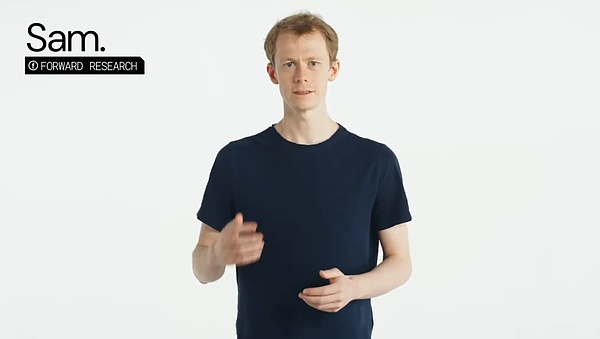
We have built a brand new computing primitive that is deeply embedded in the infrastructure of the Internet. It is a true implementation of the world computer, a decentralized supercomputing environment that is as fundamental as the primitives for accessing web content. We have completely solved the problems of global state sharing and all the scalability challenges that arise from it. AO tokens are now transferable. So, this video will detail the economic mechanisms in this ecosystem. In the coming weeks, we will also host dedicated workshops and events to provide developers and infrastructure providers with in-depth explanations on how to use our new technology.
But before we dive in, let's first give a quick overview of the technology. Imagine if every time you visited a website, you could not only ensure the privacy of your connection, but also ensure that the data you received was accurate. What would this experience bring? It would be like a new padlock icon in your browser. This is the core value that the AO mainnet brings to the Internet.
AO-Core
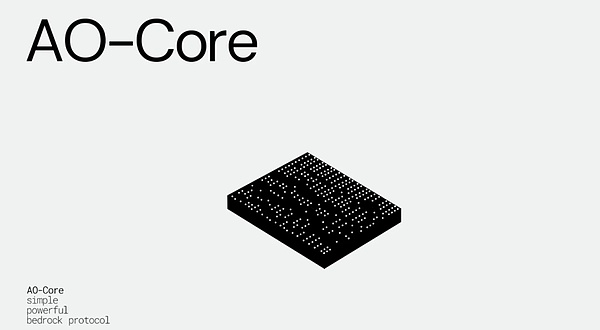
The foundation of the protocol is what we call AO-Core. It is a simple but powerful protocol that applies the core components of blockchain to the Internet transport layer - the HTTP protocol, and actually embeds blockchain built directly into the existing Internet technology stack by verifiable, cryptographically linked computations. AO-Core transforms every web request, whether loading a web page or using an API, into a potential AO transaction. Another design consequence is that AO processes can also directly generate dynamically rendered web pages and seamlessly exchange data with the wider Internet. At the same time, the web application itself (i.e., the smart contract) can send messages to existing web pages just like any other AO process. It's like the built-in HTTP Oracle system, though it doesn't need an external Oracle because it acts like an Oracle itself, since it's already embedded into the HTTP protocol layer. But that's just the beginning. AO duplicates computation by sharing computation results across the network. If a node has already performed a task, other nodes that trust it don't need to perform the same task again. Instead, they exchange links in computation space, just like hyperlinks in a web page. They just store HTTP redirects. This in itself is a major breakthrough that allows us to maximize the efficiency of the network by inheriting the existing powerful optimization infrastructure that makes the Internet run. Today, every content delivery network (CDN) - the machines that make it possible for you to watch this video quickly no matter where you are - can now act as an AO-Core state resolver, used as a computation system. These CDNs can also act like normal nodes in a blockchain network. Another consequence of this design is that we inherit all the infrastructure development work on optimizing packet delivery on the Internet since the 1960s and 1970s. All of this is available to us "for free" in AO.
This is in stark contrast to networks like Ethereum and Solana, where adding nodes means adding redundancy and executing the same program repeatedly. In AO, adding hardware directly increases the computing power of the network. We believe this is essential to building a decentralized supercomputer. Frankly, there is no other way.
Critically, AO cryptographically interweaves web page requests and responses together to form a chain-like chain effect, inheriting the verifiability and traceability characteristics of traditional blockchains. This brings blockchain-level verifiability, tracing the entire process chain from data generation to the user's browser. You should be able to get a response from AO and see all the computational links involved, verifying the accuracy of each link one by one.
Since we started building AO, we knew that in order to support the different ways people might want to use it, we had to support a variety of different security mechanisms. Bitcoin's security doesn't apply when you're just accessing social media data.
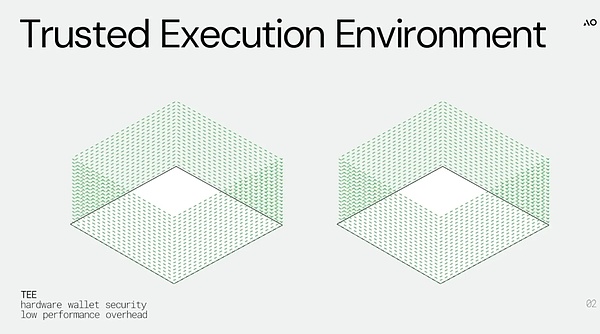
Therefore, we are excited to announce today that the first Trusted Execution Environment (TEE)-based security option in the AO ecosystem has been officially launched. TEEs provide the security guarantees that many common applications need, with almost no additional cost or performance overhead. To explain this further, I'll hand the microphone over to Tom, AO's CTO.
Trusted Execution Environment
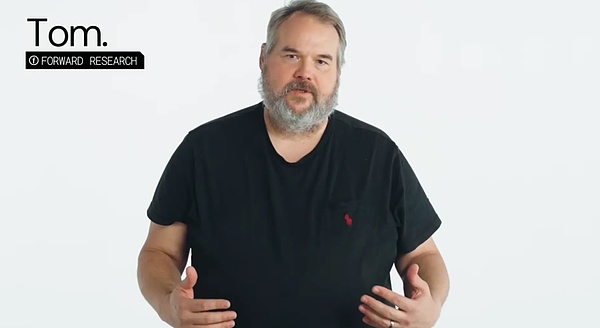
Imagine a CPU with the security of a hardware wallet, which is essentially what a TEE does. Computations within a TEE are performed in such a way that the host cannot see or interfere with it, just as you cannot extract the cryptographic keys in a hardware wallet even if you hold it. This enables AO services to run in these highly secure environments, achieving verifiability close to zero-knowledge proofs, but without the expensive cost and huge performance overhead. Traditional privacy solutions, such as fully homomorphic encryption and zero-knowledge proofs, while powerful, often come with significant performance penalties. They can be orders of magnitude slower than local execution, and while mathematically sound, are so complex to implement that they are prone to errors. This has led to critical issues like unlimited supply, which have also appeared in other blockchain networks. In contrast, AO's TEE-based approach achieves highly verifiable, even private computations, at almost no performance cost, and provides security and privacy protections similar to traditional methods without the huge performance loss. You will be able to perform private computations through TEEs, taking advantage of the new possibilities provided by AO to help developers build secure, confidential decentralized exchanges, private voting systems with verifiable results, and smart contracts that ensure the confidentiality and security of information (such as Web 2.0 API keys). These features allow developers to create a new generation of privacy-focused applications.
Tokenomics
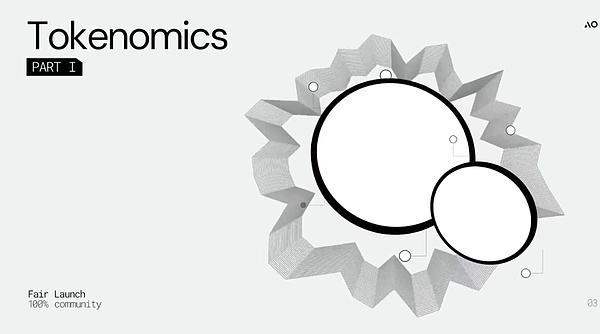
However, today you are here to learn about token economics, so let's talk about this. It takes not only technological progress to initiate network effects, but also the right use of incentive mechanisms. This is the key to the unique monetary system that AO has established. Let's look at its design. As we discussed earlier, AO is a completely fair launch. It's a radical new model that builds on the greatness of Bitcoin and emphasizes equal access and equal terms.
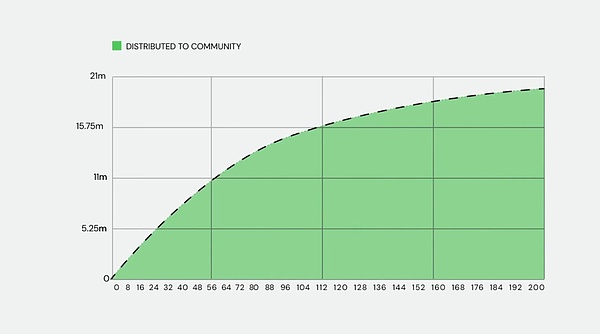
AO will issue 21 million tokens, released over a four-year period. This is similar to Bitcoin, but with a smooth half-life curve instead of a step function. The mechanism is also adjusted to emphasize economic growth to smooth out market shocks.
We do not distribute tokens by rewarding energy consumption, but by incentivizing community members to store or hold assets within the AO economy. No AO tokens are pre-mined or pre-allocated. We support the development of the network, the core builders, and the decentralized team of different growth organizations by providing native returns on assets deposited into the ecosystem, rather than by selling tokens. Depositors deposit every penny of their money in an immutable smart contract and can use these assets inside the AO through the bridge. Depositors receive corresponding AO as yield. This is a win-win situation. Capital can be used to build powerful new ecosystems while also adhering to the original principles of the crypto world - equal access, equal terms.
This is a new path we believe to open up for industry projects, and we have rejected a large number of investment proposals and resolutely pursued this approach because we believe that a network of this scale requires a fair monetary policy.
AO and Arweave are inseparable. They represent two sides of the same coin - permanent hard disk and permanent CPU. They work together to form the foundation of the permanent network technology stack. But this stack is not just AO and Arweave, it also includes all the powerful new protocols that are being built on it, from decentralized gateway access (through Ar.io), to the upcoming integration of AO-Core, to autonomous financial agents in its ecosystem and unlocking virtual worlds.
Permaweb Index
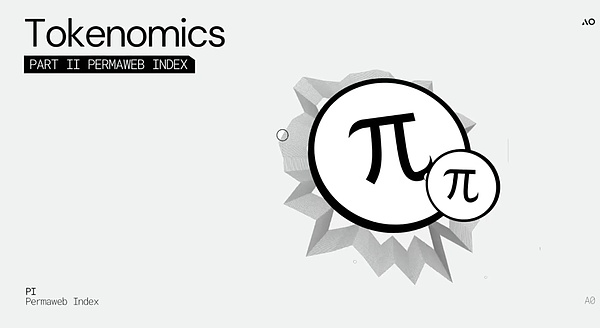
But with so many new tokens, how can you easily own each one and keep track of the permaweb? To be honest, even I find it a bit difficult to keep up sometimes. That’s why, thanks to Autonomous Finance’s technology, we are excited to launch the Permaweb index.
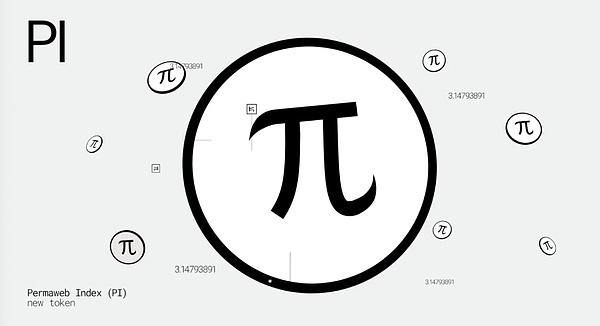
At the heart of the Permaweb Index is a token called Pi, which represents ownership of the core elements of the permaweb stack - 1/3 Arweave, 1/3 AO, 1/3 fair sale projects in the ecosystem. This provides a very easy way to get exposure to all elements of the entire stack, not just a single component. It is the default asset and medium of exchange for the ecosystem.

Since launching AO's token last June, we have been working with founders in the ecosystem to explore how they can use this fair sale model to drive their new protocols in the network and downstream. The process is as follows: any AO depositor or Arweave holder can choose to delegate their AO earnings to a new project in exchange for a portion of the project's fair sale tokens. This allows the project to distribute 100% of the tokens to its users while still strongly supporting development. This still retains the basic principles of the crypto world - equal access and equal terms for all participants.
Projects like Apus Network are already pioneering this approach in practice, having secured over $7M in delegated deposits in just a few weeks. The Perpetual Network Index provides a new element to this mechanism, an autonomous neutral agent that automatically replicates how participants delegate their earnings to new projects. This provides a passive index for users who don’t have the time to deeply explore emerging projects in the ecosystem. Just like you can already delegate AO earnings to Apus Network or other projects in the ecosystem, users can now choose to delegate earnings to Apus Network and gain ownership of AO, Arweave, and all upcoming fair sales projects across the ecosystem. You can visit ao.arweave.net to select your preferences.
Next, let’s take a deeper look at how the index works in the background. Because Autonomous Finance created the technology that powers this system, we are happy to invite its founder Ivan to explain it in detail.
Autonomous Finance
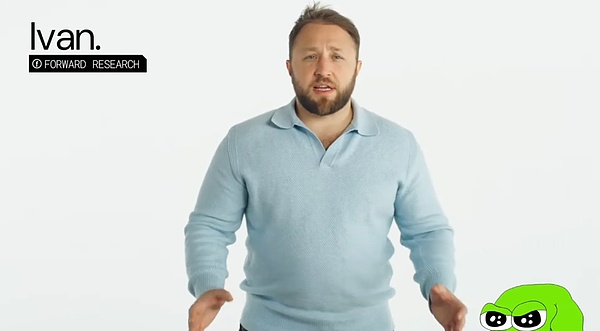
Thanks, Sam. One of the great innovations of the Perpetual Network Index is its automatic rebalancing system. This on-chain agent dynamically manages the index's holdings, ensuring that the index always maintains the best performance in the Perpetual Network ecosystem and provides good exposure to the most promising new projects.
This agent has two key functions. First, it simulates how AO depositors distribute returns. This means that projects that receive strong support from AO depositors will also be well represented in the Pi Index, creating strong synergies in the ecosystem.
Second, the agent rebalances Pi's holdings based on market dynamics. Pi is an engine built into the DNA of the Perpetual Network. It is a decentralized finance (DeFi) tool that aims to create a fair and efficient financing environment for early projects on AO. It uses a combination of smart algorithms and autonomous agents to manage liquidity and ensure that everyone has access to the most promising assets. Projects can participate in a mechanism we call "fair sale" to allow the community to participate together. Because Pi is now an autonomous and permissionless index, it promotes collaboration across the ecosystem and eliminates the zero-sum game mechanism prevalent in many ecosystems. Pi promotes healthy growth rather than letting projects compete for limited resources. Every participant benefits while expanding the permanent network, not just taking from it.
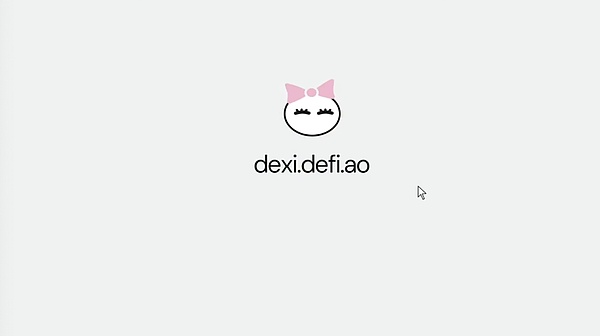
But what if you want more control? Dexi lets you create your own portfolio agent. You can choose from any on-chain protocol and build your own custom index. This agent will automatically rebalance and manage your portfolio to ensure efficient and transparent operation on the chain. The best part is, it’s live. For now, check out the documentation on the Perpetual Network Index at dexi.defi.ao to learn more. Let’s build the future of the on-chain economy together.
Sam
Thanks, Ivan. If you’re an existing Arweave token holder or AO depositor, you can now choose how you want to receive your yield. You can choose AO tokens, Pi tokens, or a combination of any fair sale project in the ecosystem. Just visit ao.arweave.net and make your selection. If you don’t set a selection, existing depositors from other networks will continue to receive AO tokens, as they get those directly through the bridge, and Arweave holders generally want exposure to the entire ecosystem. So, by default, after March 14th, they will receive Pi tokens. This will give them both Arweave and AO, as well as a basket of ecosystem assets.
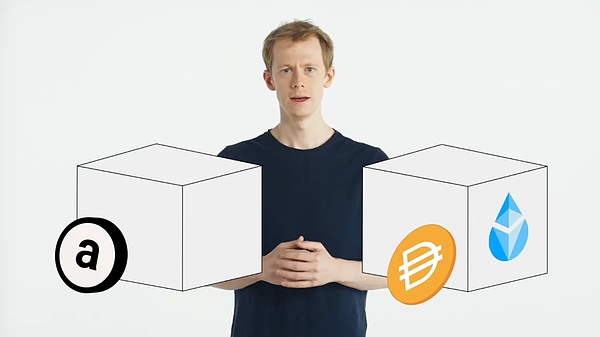
If you prefer to continue to receive only AO tokens, then you can visit the official website to make your choice. You can use the minting page on ao.arweave.net to view all available reward options. You can also learn more about each token type and view the full terms and conditions associated with each token. We believe this is a new and bold approach to driving the development of the ecosystem, which has already spawned a culmination of a season of fair sales in the network. Apus Network is the first project to take this step. Connor, can you tell us more?
Apus Network

Hello everyone, I am Connor, the community leader of Apus Network. First, let me introduce Apus Network to you. We have adopted a revolutionary approach, combining Arweave and AO, using verifiable decentralized AI reasoning to promote a new era of artificial intelligence, building transparent and fair AI based on deterministic GPU computing and decentralized infrastructure.
The current AI field is mainly dominated by centralized models, which face problems such as data privacy, security, and algorithm transparency. Apus Network directly addresses these challenges by incorporating deterministic computing into the AO protocol and using Arweave to store immutable data.
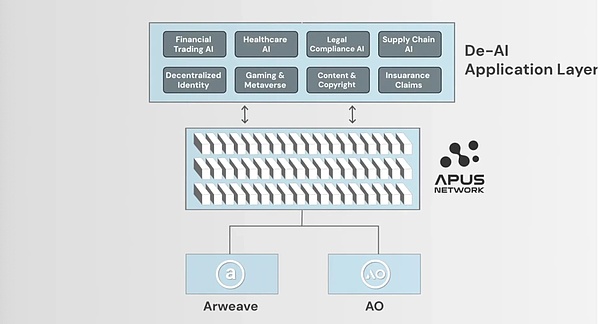
This ensures that AI models are not only accurate, but also verifiable, preventing manipulation or bias in the output. We are not just creating a new GPU network, we are building a verifiable decentralized AI that is trustless, scalable, and accessible to developers and users around the world. By using deterministic GPU computing, we ensure that every computation is consistent and reproducible, eliminating the problems common in traditional non-deterministic AI models. This is a paradigm shift in the field of AI, with the potential to disrupt industries from healthcare to automated systems.
Joining the Permalink Index is a game changer for Apus Network and early builders. The Permalink Index is a catalyst for the growth of decentralized applications and covers the entire Permalink ecosystem, including AO and Arweave. For us, this joining means that through the unique distribution mechanism of the Permanent Network Index, users can directly contribute to the development of Apus Network. This not only drives our growth, but also enables the community to participate in a truly decentralized and transparent environment. This is an innovative new model that promotes direct support for projects within the ecosystem without relying on traditional venture capital.
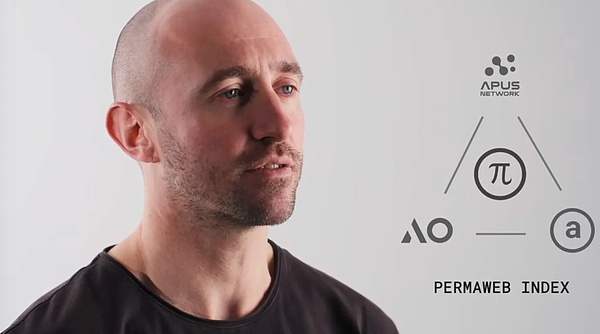
The part we are most excited about is that being a part of the Permanent Network Index allows us to provide users with diversified exposure to the entire Permanent Network ecosystem. Through the Pi token, users can easily gain exposure to AOs and new projects in the ecosystem, which simplifies exposure to the growth of decentralized applications. Promoting the growth of the entire ecosystem is important to everyone, and it is especially important to work with us at Apus Network. The Permanent Network Index also perfectly aligns with our vision for sustainable growth. The development model supported by revenue means that participants are rewarded for supporting the ecosystem, and at the same time, major risks are minimized.
This is an exciting opportunity for everyone to get involved in early-stage projects as it ensures fair and equal access, just like the fair sale mechanism of AO. We are very excited to be part of this rapidly growing ecosystem, where the yield on deposited assets helps support development, making participation more secure and sustainable. The Permalink Index fits perfectly with Apus Network's mission to help make decentralized technology transparent, fair, and accessible.
Protocol.Land
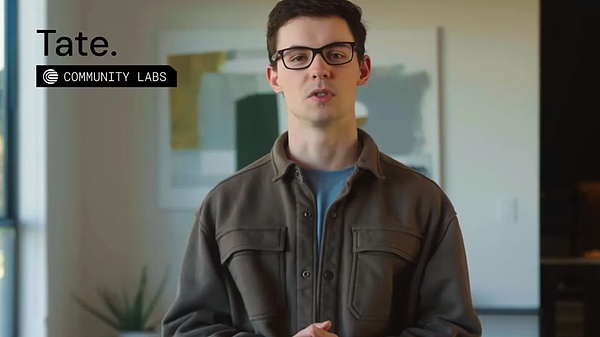
At Community Labs, we are building decentralized infrastructure to push the boundaries of what is possible on AO and the Permalink. One of our most ambitious projects is Protocol.Land, which is redefining how open source code is preserved, monetized, and evolved. Despite all the talk about decentralization, most protocols still rely on centralized code management. Bitcoin is decentralized at the network level, but its development is controlled by only a few maintainers. If you don't believe me, take a look at their contribution guidelines. Git is distributed, but not truly decentralized. This results in only a few entities deciding how the protocol evolves, and open source contributors, despite their huge impact, rarely receive compensation that makes their work sustainable.

Protocol.Land is a fully decentralized, immutable, and economically incentivized source control platform, where developers are fairly rewarded for their contributions and guaranteed by a fair fork mechanism. The community decides which improvements are important, there is no centralized approval, no governance bottlenecks, only organic evolution without permission, where the best ideas and the teams behind them will succeed.
AO is the core of Protocol.Land, supporting immutable records on-chain, combining the best features of Git to enable it to operate in a decentralized environment. It provides permanent verifiable commits stored on our Arweave, ensuring that code can never be lost or censored, and for developers, the ability to tokenize code bases, removing the need for grants or other support, allowing them to monetize their work. This creates a sustainable model where contributions are financially recognized and fairly rewarded.
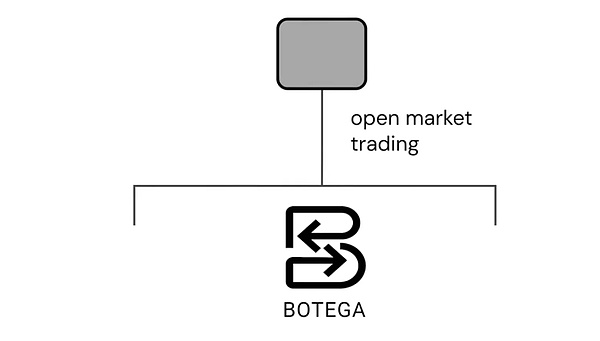
Inspired by the AO fair sale token economics, the fair sale code base subverts the traditional model, has no pre-mined tokens, and ensures that early users benefit through a bonding curve. Marketers can also benefit while maintaining fair access. Once projects reach critical mass, they will move to open market trading through Botega, creating a liquid and fair ecosystem for contributors. We will take this further by allowing projects to enable deposits for yield-generating assets. This is not just about rewarding contributions, but about enabling open source development to continue over the long term, and being part of the Perpetual Web Index takes this a step further. Codebases that choose the Fair Sale will be eligible to participate in the Perpetual Web Index, which enables developers to open source and decentralize their codebases while introducing a new sustainable model for themselves and their work. More importantly, it provides incentives for valuable codebases to continue to evolve even if the original creator exits. This is how truly decentralized protocols are born, scale, and thrive.
AR.IO
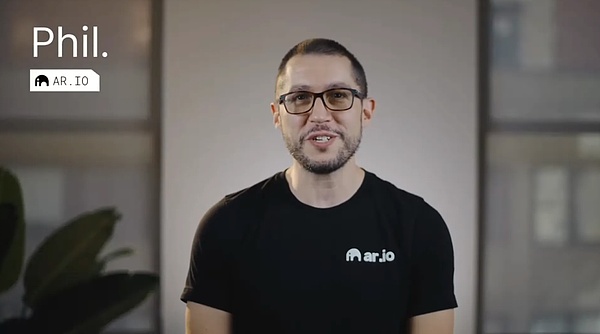
I'm Phil, founder of Ar.io, and we've built the world's first permanent cloud network, connecting users to a permanent network with unparalleled scalability and resiliency. Today, I'm excited to share with you how Ar.io and AO are disrupting the $600 billion cloud industry, and what our inclusion in the Permanent Network Index means for the future. Until now, traditional cloud storage solutions have been the only option, and these solutions are governed by centralized control systems, making them vulnerable to the threat of deletion, tampering, and censorship.
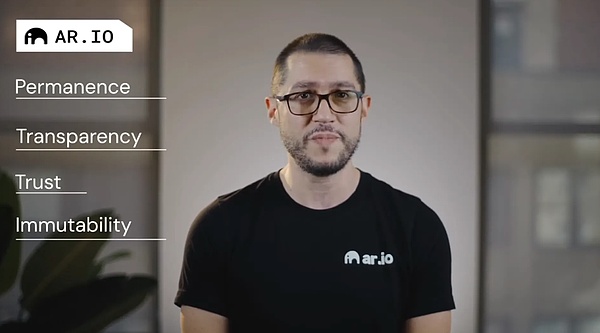
Ar.io's solutions ensure data permanence, transparency, trustworthiness, and immutability through decentralized access, and we are creating a world designed to preserve information freedom. The Ar.io network is more than just access to Arweave immutable storage, it's a complete cloud service layer that developers can easily use. Think of it as an AWS without ownership, with incentives, that can run anywhere.
It supports permanent data upload, download, indexing, query, and even domain name management, all through fast, modular, and open source gateway nodes. This makes it ideal for growing use cases such as decentralized AI, website hosting, and blockchain oracles. At the core is AO's actor-oriented and network-native architecture, which powers Ar.io's smart contracts. This architecture makes them scalable, efficient, and verifiable, ensuring that every interaction on the Ar.io network is cryptographically secure and seamlessly integrated with the entire network. $ARIO is the utility token that drives the Ar.io network.
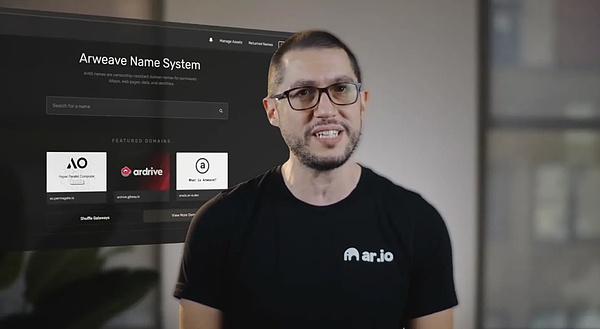
It drives protocol incentives, staking, and ArNS, the Arweave Domain Name System. ArNS is a key innovation that simplifies the use of addresses by converting complex wallet addresses and transaction IDs into human-readable and friendly names. They can be accessed through any gateway, replacing traditional domain names, making the permanent network more accessible and intuitive, while providing users with a universal identity that is seamlessly integrated into decentralized applications. Protocol-based incentives ensure a thriving network economy, rewarding gateway operators for high performance and reliability. Token holders can delegate their $ARIO to operators and receive rewards without having to directly manage infrastructure. This alignment between operators and delegators enhances the scalability and resilience of the network.
We are honored to have Ar.io as part of the inaugural Permanent Web Index, marking a new phase in our community’s growth. The Index simplifies access to the Permanent Web Stack, uses the Pi token, and creates a fair, inclusive support model for builders. At Ar.io, we have always championed ecosystem growth and supported projects that scale their impact. The Permanent Web Index amplifies this mission by enabling users to allocate proceeds to innovation. This collective growth model ensures that the success of each project contributes to the broader ecosystem, which aligns with our core principles from day one.
The Ar.io mainnet is coming soon. If you’re ready to be a part of this future, now is the time. Visit our website at https://ar.io/ to learn about ArNS, run a gateway, or leverage Ar.io’s tools, and together we’ll pave the path to a resilient, autonomous, and permanent web.
BAZAR & UCM
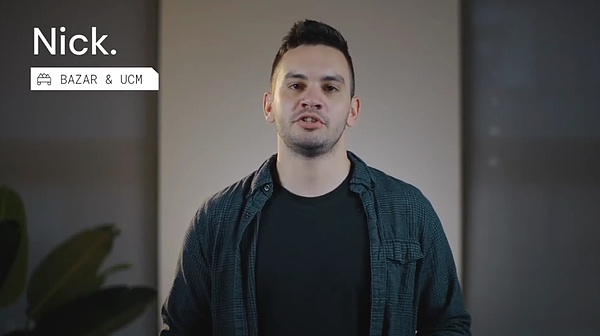
UCM is a decentralized order book that enables trusted exchange of digital content on a permanent network. Bazar is a user interface built on top of the protocol. Unlike traditional content marketplaces, Bazar and UCM are fully decentralized, thanks to Arweave and AO.
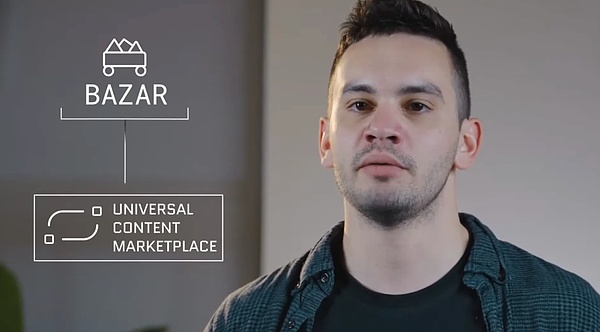
As the AO ecosystem continues to grow, more opportunities are emerging for creators and developers to launch their own projects. UCM provides the financial infrastructure to monetize digital content without relying on third-party intermediaries. Bazar serves as a visual representation of UCM, highlighting the unique and composable content traded on AO. UCM’s primary goal is to ensure that creators and users are protected, providing a decentralized and transparent protocol.
UCM’s native token, PIXL, will be included in the Permanent Web Index. Users can earn PIXL tokens by purchasing in Bazar, which rewards users for maintaining purchase continuity and is designed to incentivize discovery and interaction with UCM. We are very excited to have PIXL as part of the Permanent Web Index, which will help pave the way for future fair sale projects and provide insights into the continued development of the ecosystem. It is highly aligned with our vision for sustainable growth of the ecosystem, no longer dependent on traditional venture capital.
Bazar’s inclusion in the Permanent Web Index is an exciting opportunity for us to work more closely with the Permanent Web community, supporting our projects through an innovative model that allows users to directly support the development of Bazar. Much of Bazar’s growth has been driven through collaboration with ecosystem partners, and we’re eager to continue building these partnerships and driving the growth of the Perpetual Web. The Perpetual Web Index is an important step toward that mission. Thank you to everyone who has supported Bazar and UCM over the past year, and we’re excited to continue working on the future of the webspace.
Basejump

Globally, 3.5 billion people interact with gaming assets. Almost half of Gen Z gamers update their avatars monthly, and most would choose a career in game development over becoming a doctor, lawyer, or professional athlete. But the gaming ecosystem is closed. Players can’t own the assets they’ve spent hours unlocking, and creators aren’t paid fairly. It’s time to change the rules.
Enter Basejump, an open, code-free platform designed to let anyone create, discover, and monetize cross-platform compatible game assets and worlds. Powering Basejump is Action, an infinitely scalable, permissionless AI engine built for the next-generation internet.
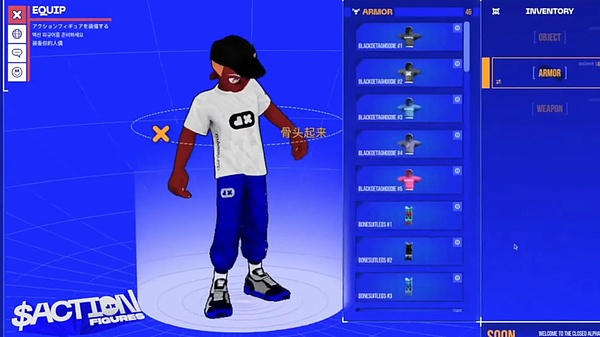
With Action, entire games and assets can be generated with a single text prompt and deployed instantly. It's fast, interoperable, and designed to unlock creativity at scale. At the heart of the ecosystem are hyper objects - interoperable blockchain-connected digital assets. Hyper objects can be avatars, in-game items, social filters, or even entire games. The teams behind Basejump and Action have scaled some of the most prominent gaming, crypto, and consumer technology platforms on the planet. Together, we're creating a whole new gaming and cultural ecosystem based on collaboration, not control.
Action is not limited to the virtual world, it has real-world impact. Each hyperobject connects to and protects a real-world rainforest area. In partnership with the US Rainforest Foundation, Basejump aims to protect almost 4 million acres of Peruvian rainforest through the Action launch. Built on Arweave and the AO supercomputer, Action leverages decentralized storage and computing power to enable infinitely scalable AI-driven games. These technologies come from the back of the new Internet, one that is faster, fairer, and more durable.
Arweave is not just another blockchain, but a revolution in persistence. It ensures that data, games, assets, and worlds remain immutable and accessible indefinitely. This means creators no longer have to worry about losing years of work due to a platform shutdown. For Basejump and Action, joining the Permanent Web Index is a recognition of our vision and an important step in creating a decentralized, interoperable future.
This milestone reinforces our commitment to building a fairer internet using cutting-edge technology, empowering creators, and ensuring that gaming and digital innovation benefits everyone. Thanks for watching, and we’ll see you in the Perpetual Web.
END
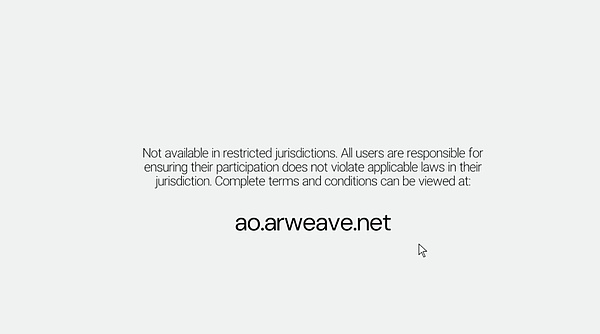
Today is just the beginning of the AO mainnet launch series, and I can’t wait to take you deep into all the exciting technical details of this new protocol. There’s a lot to discuss.
As always, I’m very grateful not only to the builders in the ecosystem, but also to you, the community members, for participating in the exploration when the AO testnet was launched last February.
Honestly, the response has been amazing and so exciting to watch. Together, we are exploring a whole new frontier for the Internet. I hope you are as excited as I am to be a part of this movement. Until next time!
 JinseFinance
JinseFinance






























